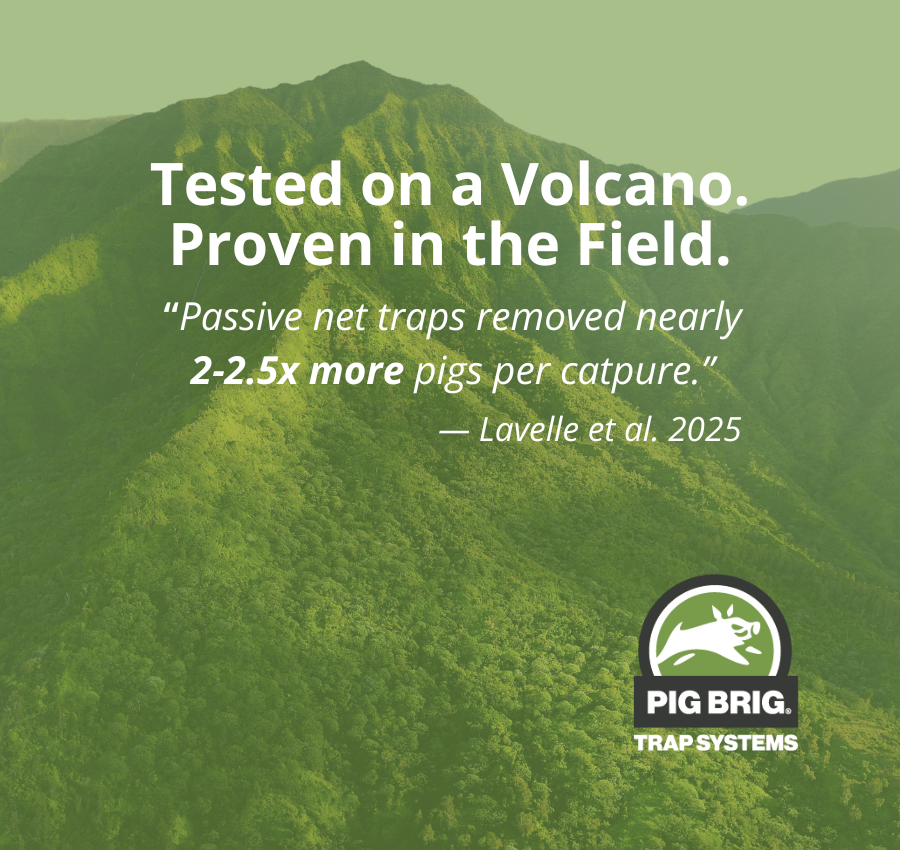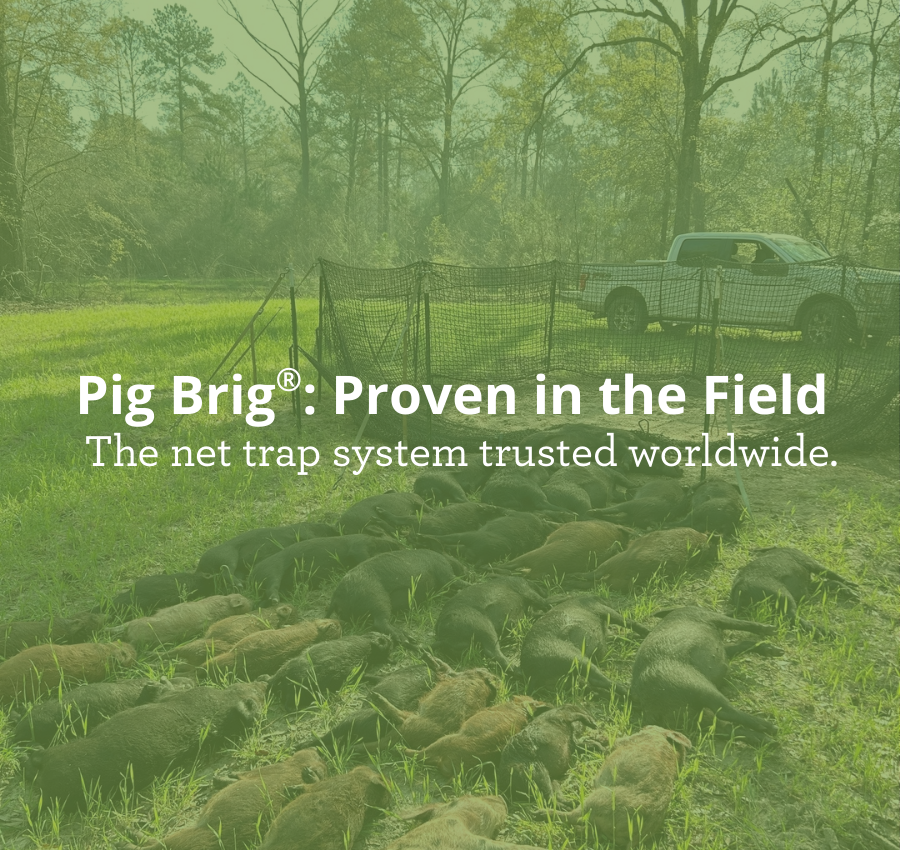Trapping Smarter: What a Hawaiian Study Tells Us About Wild Pig Removal in Remote Terrain

Try trapping invasive wild pigs on a rainforest-covered Hawaiian volcano—no roads, no cell service, and terrain so rough it’ll test your boots and your will. That’s exactly what USDA researchers set out to do in the Hakalau Forest National Wildlife Refuge.
The goal? Test trap designs under some of the most punishing conditions in the U.S. The outcome? Pig Brig® Trap Systems, the pioneer of wild pig net trap technology, didn't just survive–they dominated.
“We demonstrated that passive net traps were more effective than corral and box traps... nearly 2–2.5-times the number of wild pigs removed per capture event.” — Lavelle et al. 2025
The Study at a Glance
- Location: Hakalau Forest National Wildlife Refuge, Hawai‘i
- Traps Compared: Box traps, Corral traps, Pig Brig passive net traps
- Timeline: Nov 2021 – May 2022
- Total Wild Pigs Removed: 435
- Pigs Caught by Pig Brig: 259 – More than all other traps combined
Why Tech Dependent Traps Fail in Rugged Terrain
Smart Traps Require Smart Infrastructure
Smart traps rely on camera feeds, cell reception, and real-time monitoring—none of which exist in deep rainforest. They work on paper, not on lava rock.
What the Field Actually Looked Like
- No cell coverage
- Steep, forested slopes
- Foot and ATV-only access
Smart wasn’t an option. Pig Brig was.
“In remote settings with difficult terrain and inability to utilize smart traps, we recommend passive net traps as the most efficient means of removing wild pigs.” — Lavelle et al. 2025
Trap Performance: Pig Brig Leads the Pack
| Trap Type | Avg Pigs/Capture Event | Efficiency (Pigs/Hour) |
|---|---|---|
| Box Trap | 1.6 | Lowest |
| Corral Trap | 2.2 | Moderate |
| Pig Brig | 3.9 | 2.4x more efficient than box traps |
“Passive net traps captured 1.77 times more wild pigs per capture event than corral traps and 2.45 times more than box traps.” — Lavelle et al. 2025
Why Pig Brig Stood Out
1. Solo Setup
One person. One ATV. That’s all it took to deploy Pig Brig traps across terrain most systems can’t touch.
2. Always-Open = Always Ready
Pig Brig doesn’t rely on gates. Whole sounders get captured—including the stragglers.
3. Modular and Reusable
T-posts stay in the ground. Nets go up and down easily, making redeployment simple between captures or across seasons. Long-term infrastructure, short-term labor.
4. High-Impact Captures
The Pig Brig net traps weren’t just catching piglets. The traps captured males, yearlings, and—critically—adult females. That’s the key to long-term population control.
“Targeting adult females… has the greatest effect on population control.” — Lavelle et al. 2025
What This Means for You
Smart Traps Aren’t Always the Smart Choice
If you're managing land in remote, inaccessible areas, traps that rely on tech or terrain just aren’t reliable tools.
Pig Brig Works Where Others Don’t
The study proves it. This isn’t a backup solution—it’s the new standard for hard-to-reach areas. Less gear. Less manpower. More pigs.
Focus on Whole Sounders, Not Single Captures
Pig Brig’s continuous-capture model opens the door to whole-sounder removal—without needing constant observation or intervention.
The Bottom Line
This USDA study didn’t just test trap types. It tested grit, adaptability, and strategy in one of the toughest trapping environments in the country. Pig Brig Trap Systems came out on top.
If you're facing steep slopes, thick brush, or zero cell reception, this isn’t just a recommendation. It’s your competitive edge.
 FINANCING AVAILABLE
FINANCING AVAILABLE



